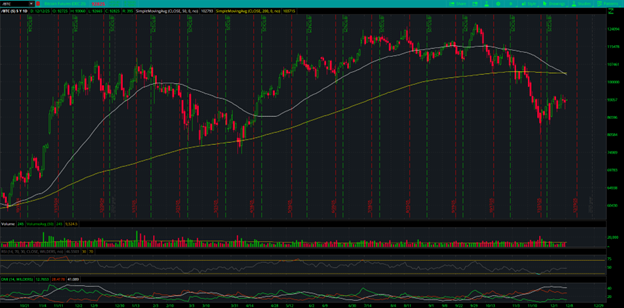Looking to the Futures
Bitcoin Flat after Fed Decision

Bitcoin traded lower on Thursday and has been nearly flat since Wednesday’s FOMC rate determination surprising traders that were expecting a bullish trend. Bitcoin futures settled at $92,010, down $775 from previous settlement.
Crypto traders had expected the cut to the Fed rate would create a bullish move in bitcoin, as seen in other risk-on assets, instead the price has given a muted response. Going into Wednesday, traders had the expectation that a 25-basis point cut would provide a liquidity boost for the financial markets.
Fed Chair Jerome Powell’s hawkish comments supported the stagnant move in digital assets. The Fed took a cautious approach to the cut, stressing a “data driven” decision making when determining future policy decisions and only projecting one cut for next year.
Broader risk conditions reflected a similar split. Major U.S. equity indexes, including the S&P 500, ended at the record highs on Wednesday. More speculative segments underperformed distributors rotated toward assets with stronger fundamental backing. Weaknesses in the US dollar index provided some support for Bitcoin, though the impact was limited by possible profit taking and the unwinding of leverage exposure. Traders would be smart to continue monitoring the dollar’s performance, as maintained weakness typically improves conditions in the risk markets.
Overall, the digital asset space has been more cautious with the total market capitalization retreating with bitcoin. Spot bitcoin exchange traded funds saw ~$3.4 billion in outflows from the past month but so far, for December, net inflows of ~$660.
Timothy Misir, Head of Research at BRN, said, "The cut is supportive, but conditional." “Institutions are buying dips while retail sells into stress. The question is whether ETF demand can keep absorbing supply until macro clears.”
Traders will look to incoming inflation data and more Fed commentary for guidance on policy direction going into 2026. Movements in Treasury yields and the dollar remain important variables for bitcoins’ direction, particularly as markets continue to digest the implications of the latest rate decision.
Technicals
Bitcoin futures opened for Friday’s trading higher at $92,725 but remained muted from Wednesday.
Bitcoin is currently trading below its 50- and 200-day simple moving averages. The moving averages formed a “death-cross” on Tuesday which is considered a bearish move on the moving averages, and a continuation of the trend may happen. This occurs when the faster moving average crosses below the slower moving average. The 50-day SMA closed at $104,456, and the 200-day SMA closed at $105,614.
The 14-day RSI closed at 44.35% and trending upwards as it appears to be signaling a forming bullish trend. The possible bullish trend is indicated by the formation of higher highs and higher lows on the RSI since November 21st when it had crossed below the 30% oversold threshold. There also appears to be near-term divergence as RSI posts higher highs but the candles do not follow this same pattern. This may signal a correction to the pattern in a bullish move. On the contrary, strong trends will adjust the RSI thresholds to fit that trend, in the instance of a cooling trend RSI will reach that adjusted threshold and continue with the stated trend. By default, ThinkorSwim sets the RSI to 30% oversold and 70% overbought, where in reality to bitcoin futures, the overbought threshold may be close to the 40%-60% range. Changing the settings of a study are easily done through the study settings.
The directional movement index indicates a strong bearish trend with signs of weakness. The ADX (white) is elevated above 40, which indicates strength in the current trend. The positive directional index is depressed but steadily moving higher, and the negative directional index is elevated but drastically decreasing.

Contract Specifications

Economic Calendar
No Economic Events
New Products
New futures products are available to trade with a futures-approved account on all thinkorswim platforms:
- Ripple (/XRP)
- Micro Ripple (/MXP)
- Micro Corn (/MZC)
- Micro Wheat (/MZW)
- Micro Soybean (/MZS)
- Micro Soybean Oil Futures (/MZL)
- Micro Soybean Meal Futures (/MZM)
- 1 OZ Gold (/1OZ)
- Solana (/SOL)
- Micro Solana (/MSL)
Visit the Schwab.com Futures Markets page to explore the wide variety of futures contracts available for trading through Charles Schwab Futures and Forex LLC.